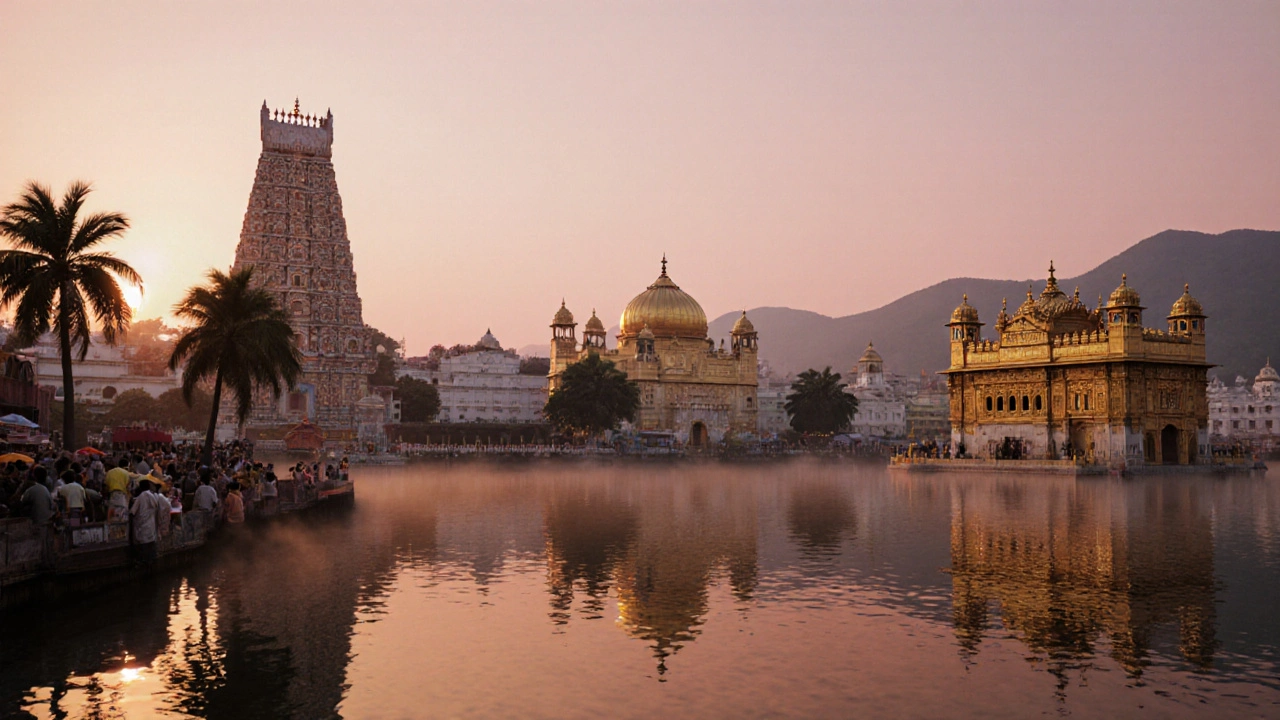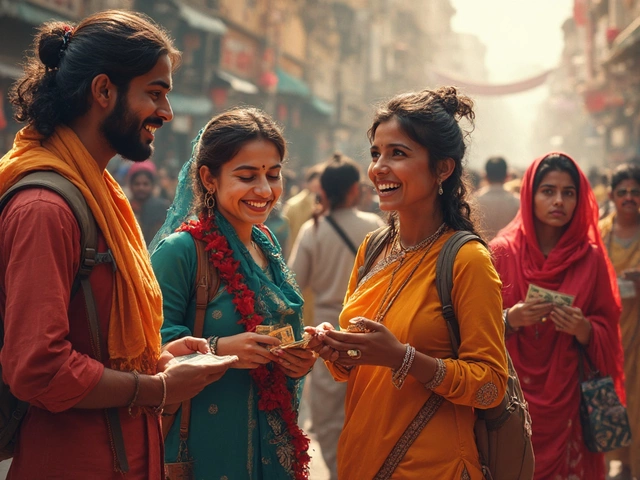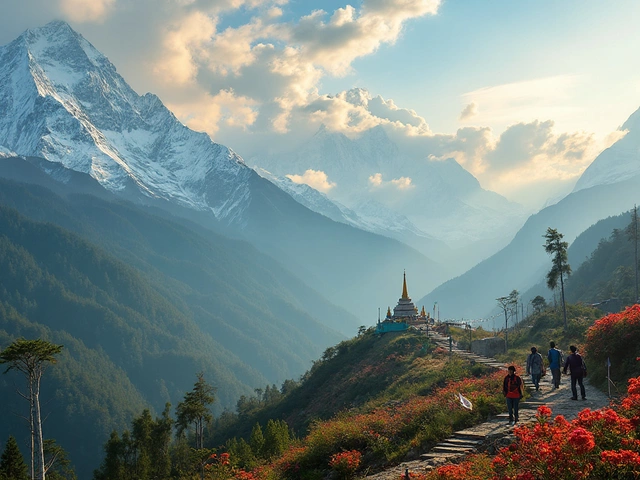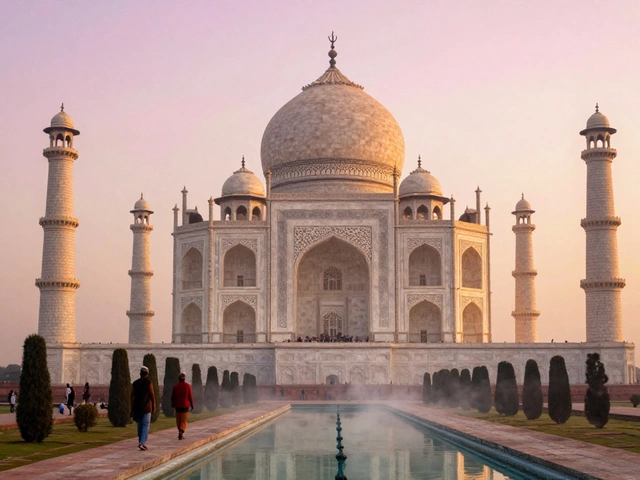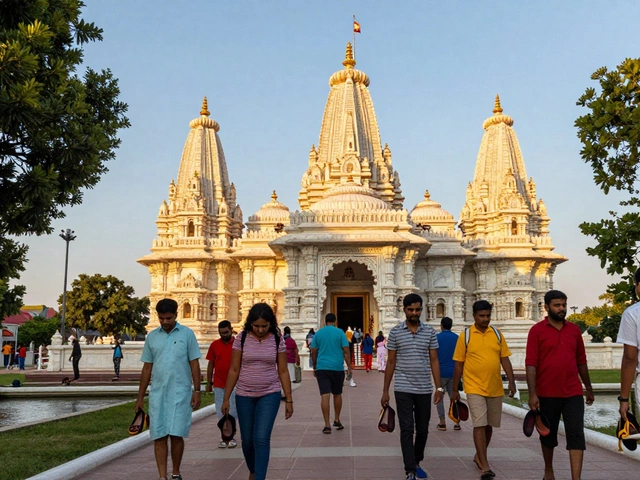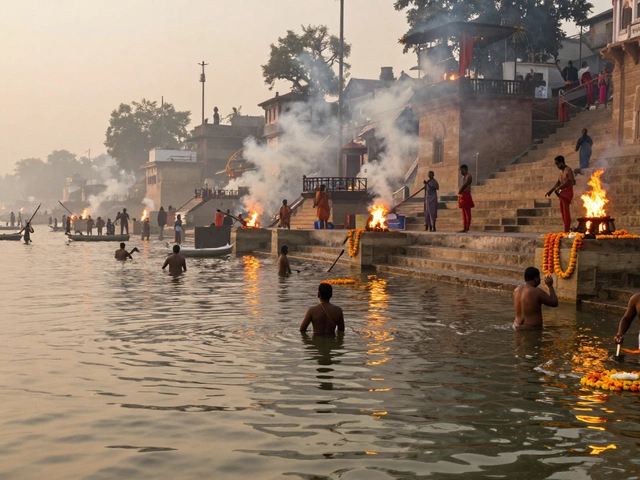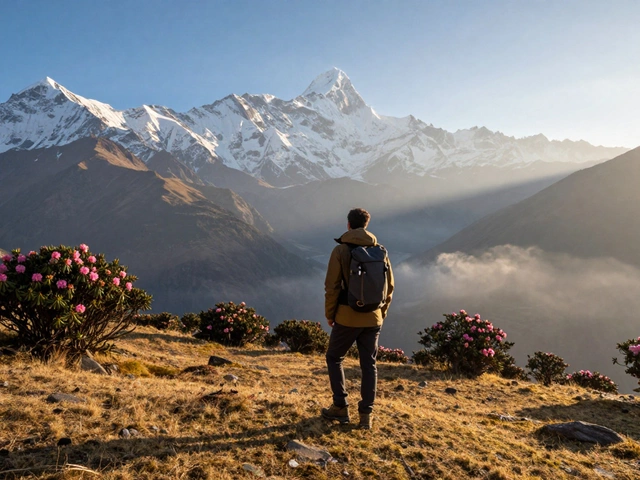India’s skyline is dotted with temples that look like they were carved by the gods themselves. From towering gopurams that touch the clouds to serene riverside sanctuaries, each structure tells a story of art, faith, and history. If you’re wondering which temple should top your bucket list, this guide walks you through the most awe‑inspiring sites, how to experience them like a local, and practical tips for a smooth pilgrimage.
What Makes a Temple ‘Beautiful’?
Beauty isn’t just about glossy marble or gold leaf. In Indian architecture it’s a blend of three core elements:
- Architectural brilliance - unique styles such as Dravidian, Nagara, or Indo‑Islamic fusion.
- Vibrant artistic details - intricate carvings, colorful frescoes, and towering shikharas.
- A sense of spiritual atmosphere - the way light, sound, and rituals create an immersive experience.
When these three align, the temple becomes a living masterpiece that captivates every traveler.
Top 7 Must‑See Beautiful Temples in India
Below are the temples that consistently rank highest for visual splendor, cultural relevance, and visitor experience.
Kashi Vishwanath Temple is a golden‑crowned sanctuary on the banks of the Ganges in Varanasi, Uttar Pradesh, devoted to Lord Shiva.
The temple’s shimmering gold dome reflects the sunrise, casting a warm glow over the bustling ghats. Its sanctum houses the coveted Jyotirlinga, making it both a spiritual hub and an architectural marvel. Early morning visits give you a chance to witness priestly chants as the city awakens.
Meenakshi Amman Temple is a sprawling complex in Madurai, Tamil Nadu, famous for its thousand‑pillared hall and towering gopurams.
Each gopuram is a canvas of mythological tales, painted in bright reds, blues, and golds. The inner sanctum’s cool stone contrasts with the bustling outer courtyard where flower markets and street musicians add a lively backdrop. Sunset is the perfect time for photography because the towers glow against the orange sky.
Brihadeeswarar Temple is a 11th‑century Chola masterpiece in Thanjavur, Tamil Nadu, known for its massive vimana and bronze Nandi.
The 66‑meter high vimana seems to defy gravity; its granite blocks were lifted without mortar, a feat still baffling engineers today. Inside, the ceiling is adorned with detailed murals depicting scenes from the Ramayana. Don’t miss the sound of the temple bell that can be heard for half a kilometre.
Golden Temple (Harmandir Sahib) is the holiest Sikh shrine in Amritsar, Punjab, built on a floating marble platform surrounded by a reflective pool.
The entire structure is gilded with gold leaf, and the surrounding sarovar mirrors the temple’s brilliance, especially at dusk. The communal kitchen (langar) serves free meals to thousands daily, showcasing the temple’s inclusive spirit. Visiting at night, when the lights dance on water, is unforgettable.
Jagannath Temple is an iconic shrine in Puri, Odisha, famous for its massive chariot procession during the Rath Yatra.
The temple’s stone architecture is blunt yet majestic, with four colossal gates each dedicated to a deity. Its unique wooden idols are replaced every twelve years in a ritual called ‘Nabakalebara.’ The annual chariot festival draws millions, turning the city into a sea of coloured flags.
Shirdi Sai Baba Temple is a pilgrim centre in Maharashtra where Sai Baba’s samadhi lies, attracting devotees from all faiths.
The simple white façade belies the intense devotion that fills the courtyard. Evening aarti (prayer ceremony) is a moving experience as hundreds of candles flicker simultaneously. The surrounding complex includes a museum that chronicles Sai Baba’s miraculous anecdotes.
Mahabodhi Temple is a UNESCO World Heritage site in Bodh Gaya, Bihar, marking the spot where Buddha attained enlightenment.
Its towering spire resembles a lotus, and the tranquil garden surrounding the temple provides a meditative backdrop. The massive Buddha statue under the canopy is a popular photo spot. Visiting early in the morning allows you to join monks in silent meditation.
Quick Comparison of the Top Temples
| Temple | State | Architectural Style | Signature Feature | Best Visiting Time |
|---|---|---|---|---|
| Kashi Vishwanath | Uttar Pradesh | Nagara | Gold‑covered spire | Early morning |
| Meenakshi Amman | Tamil Nadu | Dravidian | Multi‑coloured gopurams | Sunset |
| Brihadeeswarar | Tamil Nadu | Chola | Massive vimana | Mid‑day |
| Golden Temple | Punjab | Indo‑Islamic | Gold‑leaf façade | Dusk |
| Jagannath | Odisha | Kalinga | Rath Yatra chariots | During Rath Yatra (June‑July) |
| Shirdi Sai Baba | Maharashtra | Modern devotional | Evening aarti | Evening |
| Mahabodhi | Bihar | Gandhara‑inspired | Lotos‑shaped spire | Pre‑dawn |
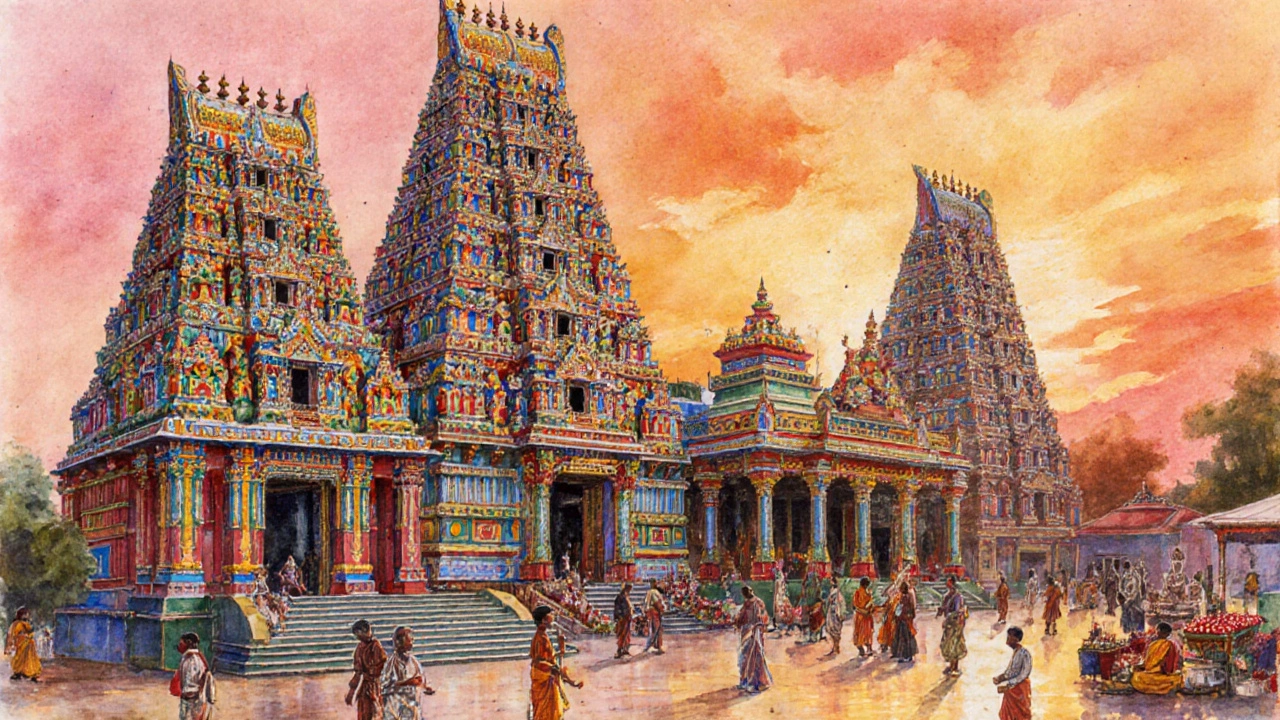
Planning Your Temple Tour: Practical Tips
Visiting multiple temples across India can feel like a marathon, but a few smart moves keep the journey enjoyable.
- Group temples by region. For example, combine Meenakshi, Brihadeeswarar, and Ekambareswarar in a Tamil Nadu loop; this cuts travel time.
- Check dress codes. Most sanctums require covered shoulders and knees. Pack a lightweight scarf or a pair of reusable leggings.
- Carry cash for donations. While many places accept digital payments, small offerings are traditionally made in cash.
- Plan for festivals. Visiting during a major celebration (e.g., Rath Yatra in Puri or Navratri in Varanasi) adds colour but also crowds; book accommodation early.
- Stay hydrated and pace yourself. Many temple courtyards are open under the sun; keep a bottle of water handy and take short breaks in shaded pavilions.
Etiquette Every Visitor Should Follow
- Remove shoes before entering the sanctum-most temples provide shoe racks.
- Speak softly; chants and bells are part of the worship experience.
- Never point feet toward deities; sit cross‑legged or on your heels.
- Photography is often restricted inside inner chambers; look for signage or ask a priest.
- Respect local customs, especially during fasting periods or holy days.
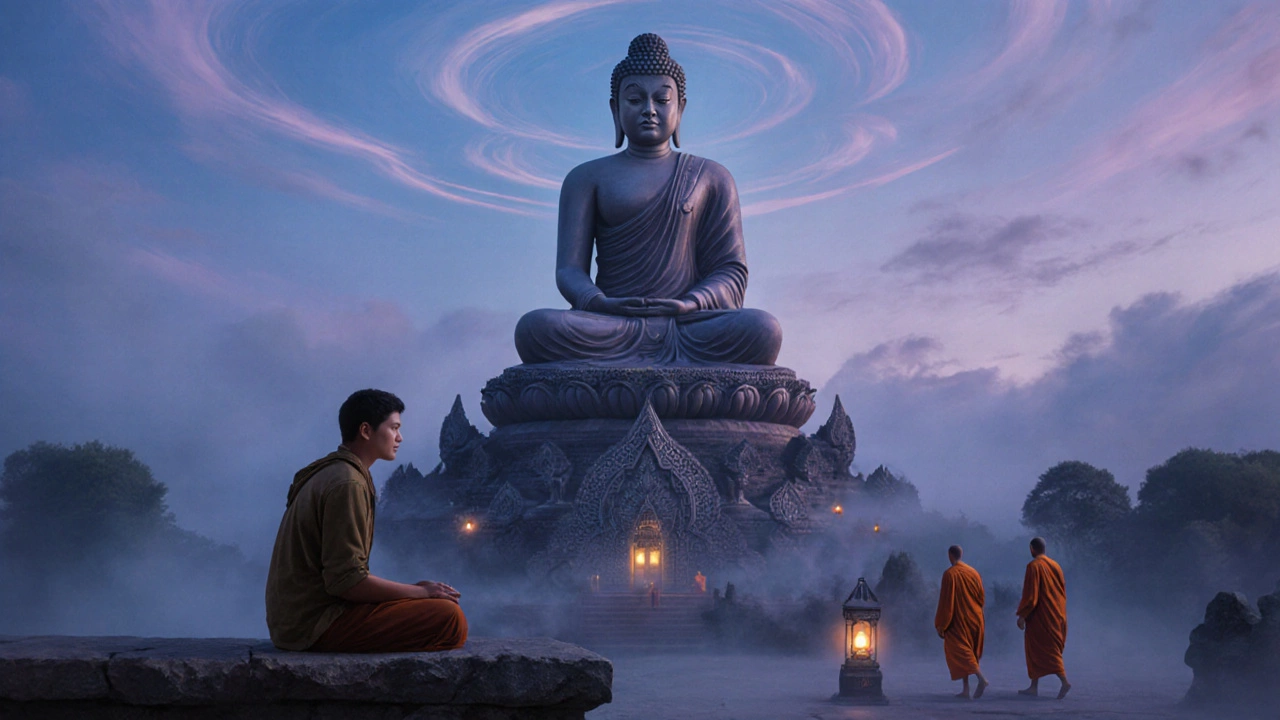
Beyond the Main Sites: Hidden Gems Worth Exploring
If you’ve already ticked the big names off your list, consider these lesser‑known yet equally beautiful temples:
- Guruvayur Sri Krishna Temple in Kerala - a modest wooden structure famed for its rhythmic drumming festivals.
- Hampi Virupaksha Temple in Karnataka - nestled among ancient ruins, its towering gopuram frames dramatic sunsets.
- Rani Katia Temple in Gujarat - a sandstone marvel adorned with 108 miniature carvings of Hindu myths.
These spots often have fewer tourists, giving you a more intimate glimpse of devotion and artistry.
Mini FAQ - Answers to Common Queries
When is the best season to visit Indian temples?
October to March offers pleasant weather across most regions, making it ideal for exploring outdoor courtyards and attending festivals.
Do I need a visa to travel to temple sites in India?
Yes. Most foreign travelers need a tourist visa, obtainable online through the e‑Visa portal. The visa is valid for up to 180 days.
Can I take photos inside the sanctum?
Rules vary. Some temples allow photography without flash; others prohibit any cameras inside. Always look for signs or ask a priest.
What should I wear to respect local customs?
Dress modestly: cover shoulders and knees. Women often wear a long skirt or trousers, while men should avoid sleeveless tops.
Is it safe to travel solo to these temples?
Yes, most temple precincts are well‑patrolled and welcoming to solo travelers. Stick to popular hours and keep your belongings secure.
Wrapping Up
India’s temples are more than stone and gold; they’re living stories that invite you to pause, reflect, and marvel at human creativity. Whether you’re chasing the glowing dome of Kashi Vishwanath or the bustling aarti at the Golden Temple, each visit promises a slice of wonder you’ll carry home.
Pick a route, respect the customs, and let the rhythm of bells guide your journey. After all, the most beautiful temple isn’t just a building-it’s the feeling you get when you stand under its roof and sense centuries of devotion swirling around you.
